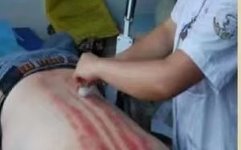

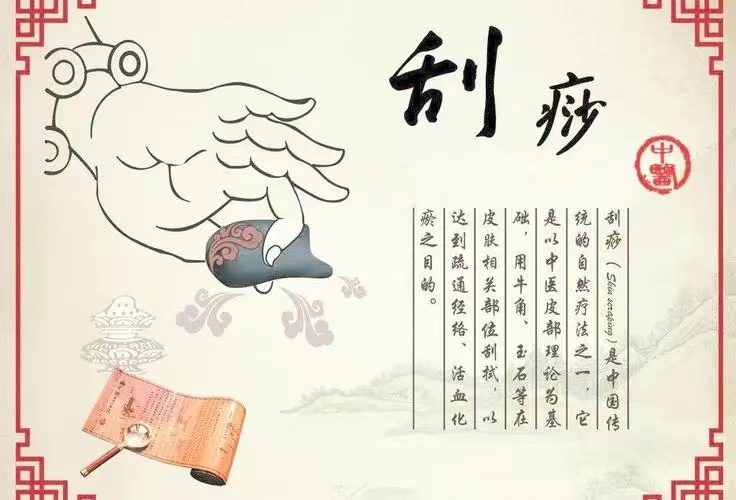
The Gua Sha technique is guided by the theory of meridians and acupoints in Traditional Chinese Medicine (TCM). It involves the use of a blunt-edged tool, such as a horn, jade, flat stone, or copper scraper, dipped in Gua Sha oil, water, or other lubricants, to scrape specific areas of the body repeatedly until petechiae appear. This technique aims to unblock the meridians, expel pathogenic factors, harmonize the functions of the internal organs, and achieve disease prevention and treatment.
Indications
It is suitable for discomfort caused by external pathogenic diseases, such as high fever, headache, nausea, vomiting, abdominal pain, and diarrhea; as well as pain caused by various bone and joint diseases, such as low back pain and shoulder pain.
Common Gua Sha Techniques
1. Direct Scraping Method
First, use a warm towel to clean the area to be scraped, apply the appropriate Gua Sha medium, and directly scrape the skin with the Gua Sha tool until Sha marks appear. This is a commonly used technique.
2. Indirect Scraping Method
Place a thin cloth over the area to be scraped, then scrape directly over the cloth with the Gua Sha tool. This method effectively protects the skin and is mainly used for children and the elderly.
3. Pinching Method
This method can be further divided into pinching, squeezing, and tapping techniques.
4. Needle Scraping Method
Use a needle to prick the surface of the patient’s skin to achieve therapeutic effects. Before needle scraping, prepare 75% alcohol, disinfecting cotton swabs, and a sterilized three-edged needle or a No. 6 injection needle. The practitioner first disinfects the local skin with a cotton swab, pinches the skin at the pricking site with the left hand, and with the right hand, quickly pierces and lifts the needle outward, pricking each site three times while squeezing out dark purple blood, repeating 5-6 times, and finally cleaning with a disinfecting cotton ball.
5. Bloodletting Method
This method is suitable for superficial veins in areas such as the elbow pit, popliteal fossa, and temples, also known as puncture therapy, which involves pricking veins or acupoints to induce bleeding for therapeutic purposes.
Operational Procedures
1. Check the scraping tool for any damage. Prepare all necessary items.
2. Assume a reasonable position, expose the area to be scraped, and ensure privacy and warmth.
3. Dip the scraping board in an appropriate amount of medium and apply it to the scraping area.
4. Hold the board with one hand, placing it in the palm, and use the thumb and index and middle fingers to grip the board, while the ring and little fingers press against the edges. Adjust the angle of the board to maintain a 45-degree angle with the skin, using the elbow as a pivot for rhythmic movements of the forearm.
5. The scraping sequence generally starts from the head and face, then to the hands and feet, from the lower back to the chest and abdomen, and from the upper limbs to the lower limbs, scraping in a systematic order.
6. Apply even pressure, starting lightly and increasing to the patient’s tolerance, scraping in one direction without back-and-forth motions. Generally, scrape until the skin shows red-purple discoloration, or forms millet-like, papular spots, or linear patches, accompanied by local warmth or slight pain. For patients who do not easily show Sha marks or have minimal marks, do not force the scraping.
7. Observe changes in the local skin color, inquire about any discomfort from the patient, and adjust the scraping technique accordingly.
8. Generally, scrape each area 20-30 times, with local scraping lasting about 5-10 minutes.
9. After scraping, clean the local skin, assist the patient in dressing, and ensure a comfortable position.
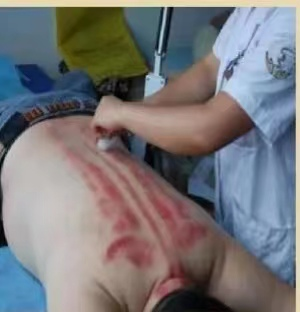
Precautions
1. Before operation, understand the patient’s condition, especially noting that some diseases are contraindicated for Gua Sha, such as severe cardiovascular diseases, liver and kidney dysfunction, bleeding disorders, infectious diseases, extreme weakness, skin abscesses, and allergies.
2. Gua Sha should not be performed on an empty stomach or after a heavy meal.
3. Acute sprains, swelling, or skin lesions should not undergo Gua Sha.
4. Patients who do not cooperate, such as those who are intoxicated, have schizophrenia, or convulsions, should not undergo Gua Sha.
5. Pregnant women should not have Gua Sha performed on the abdomen or lower back.
6. Diabetic patients have fragile skin and should be treated with extra caution, using gentle pressure.
7. If dizziness, palpitations, cold sweats, pale complexion, nausea, or other symptoms of fainting occur during Gua Sha, stop immediately, lie the patient down, and provide symptomatic treatment.
Gua Sha can promote the smooth flow of Qi and blood in the meridians, effectively unblocking stagnation. It is a beneficial method for disease prevention and treatment, helping to regulate the internal organs and relieve pain. However, it is not suitable for everyone, and individual constitution should be considered before performing Gua Sha. Some techniques should be performed by a qualified practitioner to avoid potential harm from improper application.
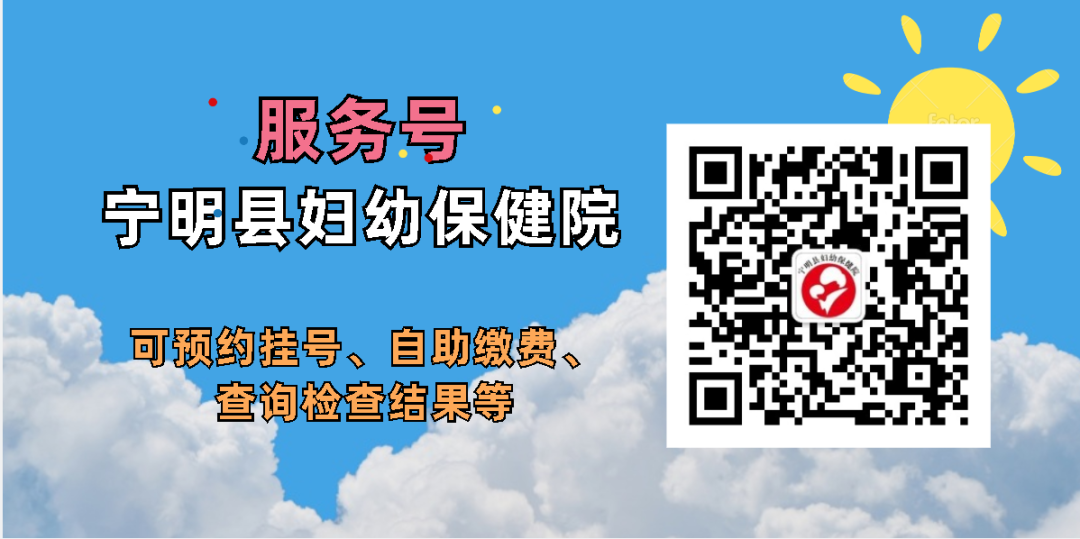
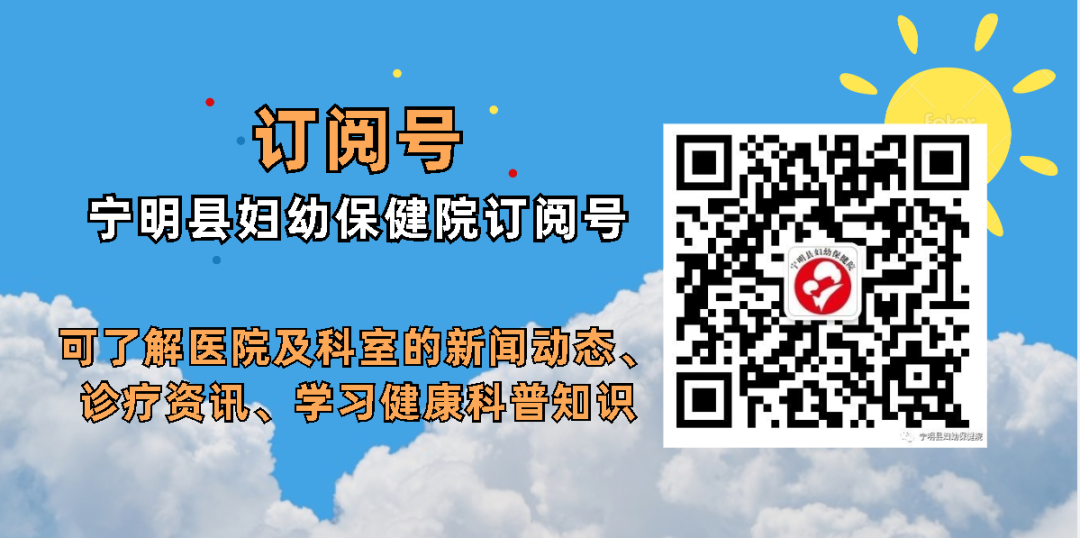
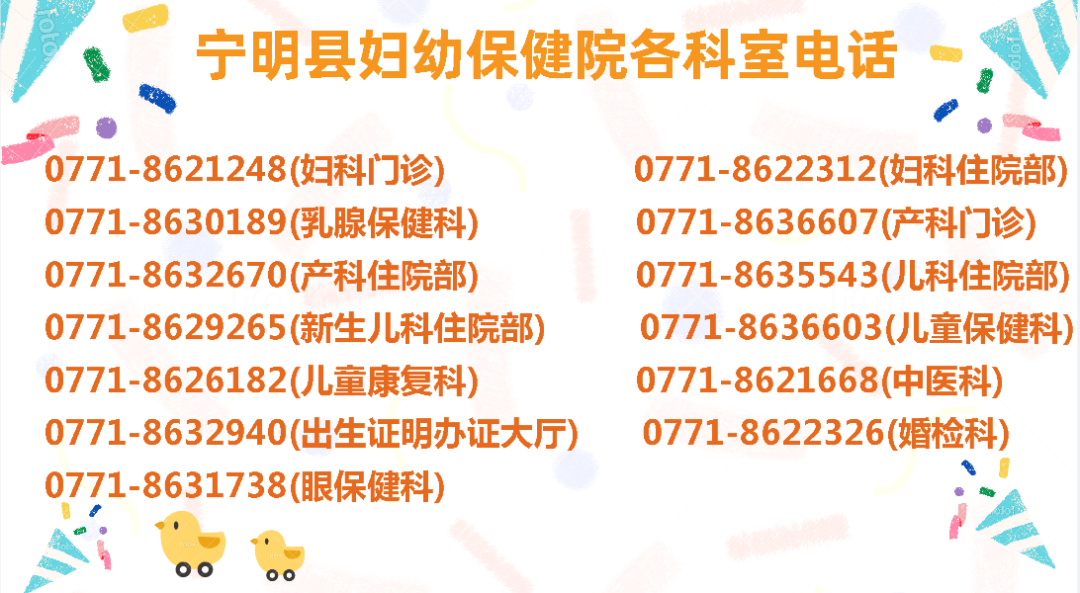
Contributed by | Su Kunling
Edited by | Kui Yuan
Reviewed by | Li Yiying

